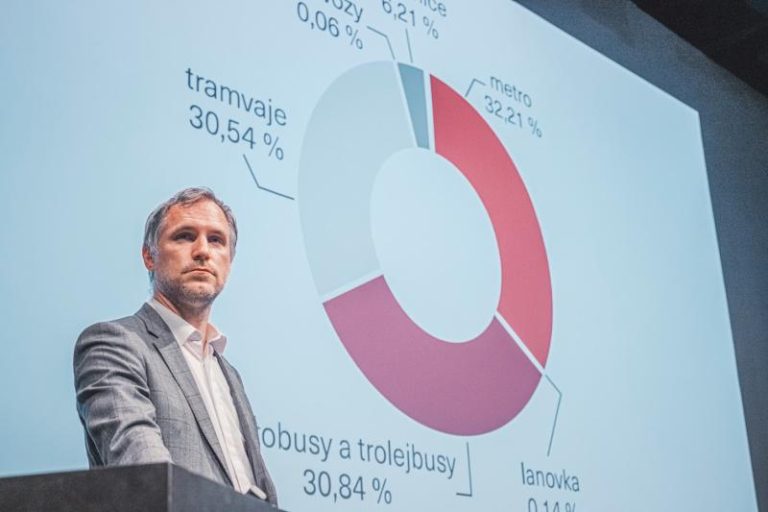The plans were presented by Deputy Mayor for Transport Zdeněk Hřib (pictured) and Petr Hlaváček, Deputy Mayor for Territorial Development. Credit: Prague Municipality.
In the most recent debate from the “Great Changes of Prague” cycle, Deputy Mayor for Transport Zdeněk Hřib and Deputy Mayor for Territorial Development Petr Hlaváček presented new projects that continue the tram boom started in the previous election period. At a debate at the Center for Architecture and Urban Planning (CAMP), they presented the tram ring and further extension of the existing tram lines, the length of which will soon reach 150 km.
“Public transport is the backbone of every city,” said Hřib. “In the case of Prague, its role is absolutely essential. Prague’s public transport is considered one of the best transport systems in Europe. In particular, rail transport is key because it is ecological, space-efficient and in line with our climate plan. We must further develop this strong side of Prague. Improving the quality and development of new infrastructure and improving user comfort and planning according to real data are the main goals for the following period.”
The deputies presented key projects in the development of new tram lines, which are currently the focus of most attention. The priority is the tram circuit, which will connect Prague around its perimeter. The construction of other sections of tram lines will continue, which in the future will provide service to the developing peripheral parts of the metropolis. Another priority is strengthening the capacity and reliability of the tram network in its most congested sections in the very centre of the city.
“Trams have a city-shaping influence, and I see their development in Prague as essential in terms of improving the transport accessibility of new districts,” said Hlaváček. “In the last election period, we started important project works and we can already see the first results in the form of construction works and operational sections.” The envisaged future tram lines will serve large development districts such as Nové Dvory or Nákladové nádraží Žižkov.
Hřib said measures would be taken to increase the flow of tram traffic, especially in places where road and tram traffic meet. This will involve increased investment, expanded data bases on mobility and infrastructure, modern telematics systems, streamlining the processes of cooperation and planning of traffic and transport development, and higher fines for blocking public transport.
The construction of the Holyně – Slivenec tram line is under preparation, the new section Divoká Šárka – Dědinská is being built, and a tram line will also lead over the Dvorecký bridge. The construction of the track on Václavské Náměstí is already before the selection of the contractor. The Muzeum tram line, which will connect Václavské náměstí with the existing tracks on Vinohradská Street, is in the stage of project documentation for building permits. The documentation for the territorial management for the tram line Vozovna Kobylisy – Zdiby, which will be the first to cross the border between Prague and the Central Bohemia region, is also being processed. The projects of the Počernická, Libuš – Nové Dvory, Malovanka – Strahov, Kobylisy – Bohnice tram lines are also in various stages of documentation (at the end of which a transfer to the cable car to Podbaba, Olšanská – Habrová and the extension of the first section to Pankrác is planned. There is also a tram, the Bubna underpass, which will enable the solution of a tram line in the vicinity of the future Vltava Philharmonic.
The following tram projects have been approved for preparation: the line leading directly in front of the Hlavní nádraží building and the Ďáblice – Čakovice, Podbaba – Suchdol, Komořany, Motol – Vypich tram lines. The tram ring project is especially key. It will connect existing lines by means of so-called tangents, i.e. lines that do not go to the city centre, in order to connect already existing districts between which public transport is not competitive. It will also support the plan to build a so-called 15-minute city and ease car traffic in the peripheral parts of Prague.
The boom in tram construction is thus a continuation of the previous election period. Specifically, over the past four years, the previous city management managed to extend the tram line to Pankrác (stage I), Zahradní Město, to Holyně, to the Hlavní nádraží or to the Hostivař Depot, among other things.







